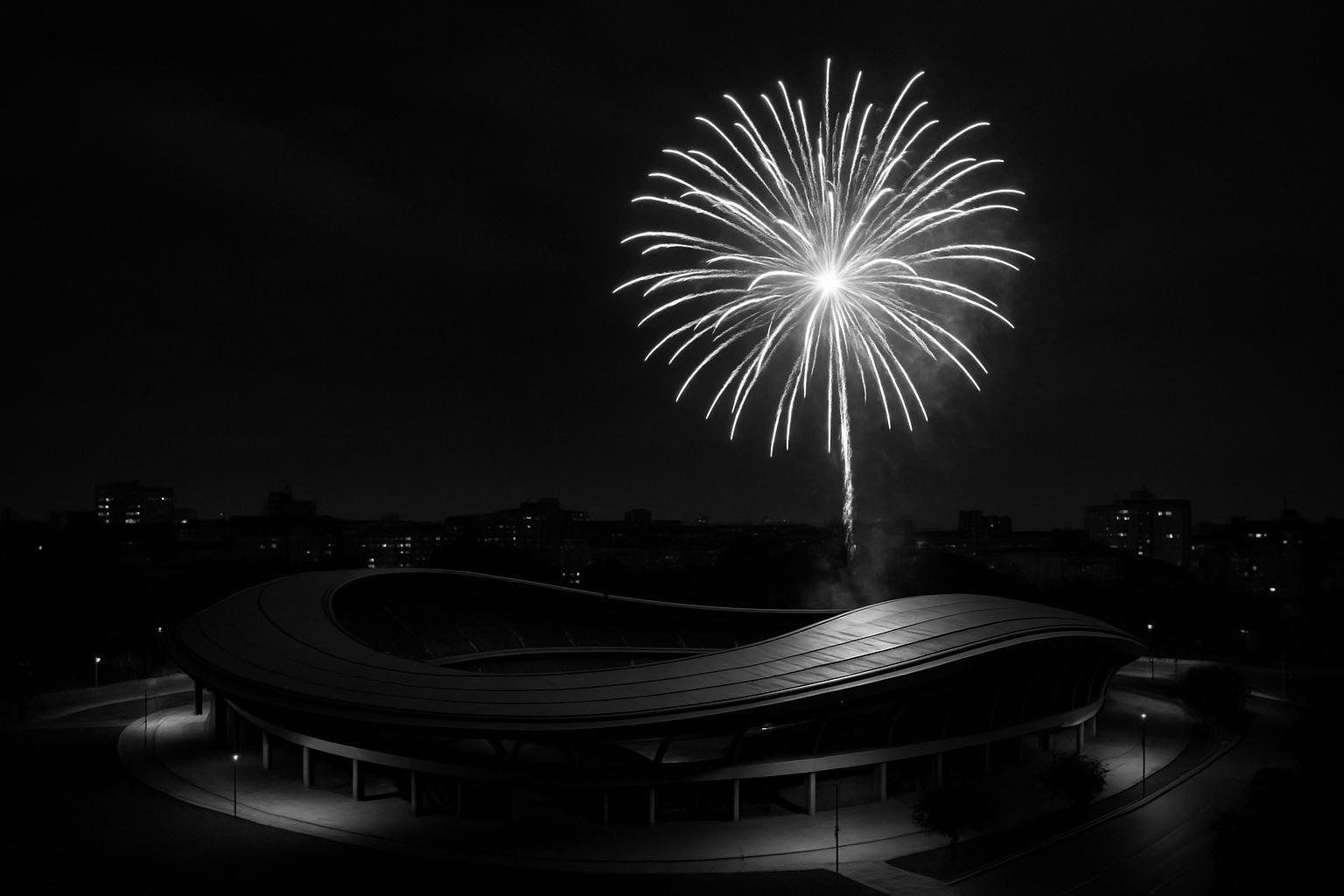A quirky and amusing phenomenon has captured the attention of East Londoners as the Olympic Velodrome in Stratford was heard emitting unusual rumbling noises resembling "fart sounds" during recent firework displays. The 6,000-seat venue, famed for its distinctive curved roof shape nicknamed the Pringle, seemed to reflect the booming fireworks in a way that created these unexpected and humorous sounds. The footage of this occurrence, shared by Matt McCafferty, quickly went viral on social media, prompting a wave of humorous responses from the public. Some viewers joked about the Velodrome having an “upset tummy,” while others expressed a desire to live near the building just to experience the comedic effects.
Industry observations explain that this acoustic quirk likely stems from the building’s unique architectural design. Structures with large curved surfaces, like the Velodrome, can significantly influence sound behaviour. Convex surfaces tend to diffuse sound, weakening echoes, while concave surfaces concentrate sound waves, creating focal points that amplify certain noises. This effect was evident in the Velodrome, where its timber ventilation system is suspected to reflect the fireworks in a particularly resonant way, generating the odd “farting” sounds during celebrations. The Olympic Velodrome’s role as a 2012 London Games legacy site includes these unexpected acoustic moments, which add a layer of character to its modern sporting function.
Architectural features causing quirky sound effects are not unique to the Velodrome. For instance, inside St. Paul’s Cathedral, the large dome creates a “whispering gallery” effect, allowing a whisper at one point to be clearly heard over 100 feet away by someone at the opposite side. Similarly, New York’s Grand Central Station has a renowned acoustic phenomenon where voices can travel clearly between distant corners of the concourse, defying the expected sound diffusion amid crowds. These well-noted examples highlight how architectural design can create rare and intriguing auditory experiences.
While the Olympic Velodrome entertains with its unintended flatulence-like echoes during fireworks, nearby landmarks such as the ArcelorMittal Orbit provide a more conventional attraction for Londoners during Bonfire Night. The UK’s tallest sculpture offers a prime vantage point to view firework displays across the city with panoramic 360-degree views, shelter from the elements, and additional attractions like the world’s longest tunnel slide. Yet, even with these celebrated vantage points, unusual and humorous events like the Velodrome’s sounds remind us of the unpredictable ways urban environments engage with festivities.
London’s firework celebrations encounter challenges beyond acoustic curiosities. Major Bonfire Night displays such as those in Carshalton and Blackheath have recently been cancelled due to rising costs and a lack of local support, reflecting the logistical and financial pressures faced by organisers. Meanwhile, historic venues like Herne Hill Velodrome continue to host firework events, combining traditional celebrations with entertainment such as fancy dress contests, bonfires, and LED shows, preserving community engagement with this vibrant seasonal tradition.
In all, the Olympic Velodrome’s surprising sound effects during firework displays have provided a moment of light-hearted cultural commentary amid the city’s evolving landscape of public celebrations. The incident underscores how architectural design can influence not just the visual but also the auditory experience of urban spaces, blending history, modern sporting infrastructure, and communal festivity in unexpected, amusing ways.
📌 Reference Map:
- [1] (MyLondon) - Paragraphs 1, 2, 3, 4, 5
- [2] (1063 The Groove) - Paragraph 2
- [3] (Queen Elizabeth Olympic Park) - Paragraph 6
- [4] (Queen Elizabeth Olympic Park) - Paragraph 6
- [5] (TimeOut London) - Paragraph 7
- [6] (Herne Hill Velodrome) - Paragraph 7
- [7] (Herne Hill Velodrome) - Paragraph 7
Source: Noah Wire Services
